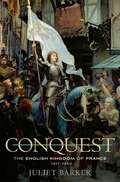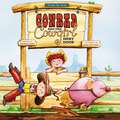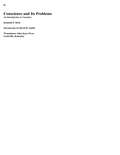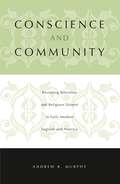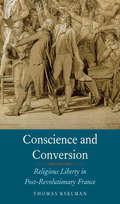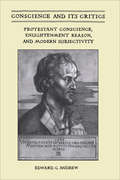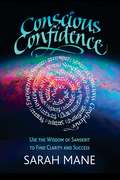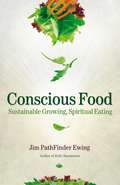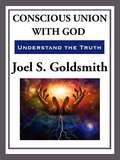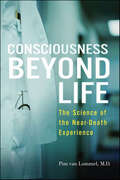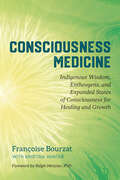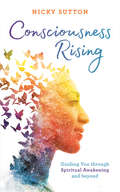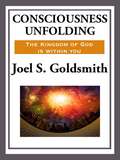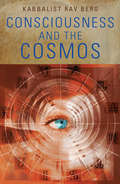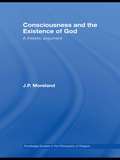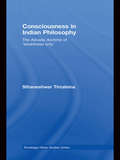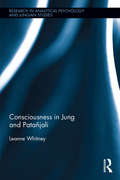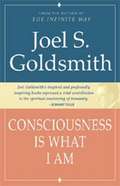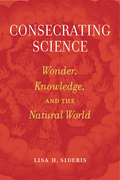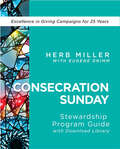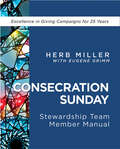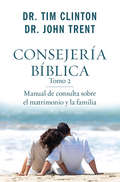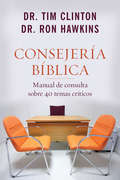- Table View
- List View
Conquest: The English Kingdom of France 1417-1450
by Juliet BarkerFor thirty dramatic years, England ruled a great swath of France at the point of the swordâan all-but-forgotten episode in the Hundred Yearsâ War that Juliet Barker brings to vivid life in Conquest. Following Agincourt, Henry Vâs second invasion of France in 1417 launched a campaign that would place the crown of France on an English head. Buoyed by conquest, the English army seemed invincible. By the time of Henryâs premature death in 1422, nearly all of northern France lay in his hands and the Valois heir to the throne had been disinherited. Only the appearance of a visionary peasant girl who claimed divine guidance, Joan of Arc, was able to halt the English advance, but not for long. Just six months after her death, Henryâs young son was crowned in Paris as the firstâand lastâEnglish king of France. Henry VIâs kingdom endured for twenty years, but when he came of age he was not the leader his father had been. The dauphin whom Joan had crowned Charles VII would finally drive the English out of France. Barker recounts these stirring eventsâthe epic battles and sieges, plots and betrayalsâthrough a kaleidoscope of characters from John Talbot, the âEnglish Achilles,â and John, duke of Bedford, regent of France, to brutal mercenaries, opportunistic freebooters, resourceful spies, and lovers torn apart by the conflict.
Conrad and the Cowgirl Next Door (The Next Door Series)
by Denette FretzREAD and HEAR edition: Conrad and the Cowgirl Next Door, the second book in &“The Next Door Series,&” tells the tale of a young boy whose biggest challenge during his summer of cowboy training is the know-it-all-cowgirl next door. Conrad can&’t wait to start cowboy training at his Uncle Clint&’s ranch, but he soon realizes he has a lot to learn – including don&’t squat with spurs on and never wave your red sweatshirt at a bull. To make matter worse, Imogene Louise Lathrup, the cowgirl next door, shows up and is all too happy to point out Conrad&’s shortcomings. In the follow-up to their smash hit Pirates on the Farm, author Denette Fretz and illustrator Gene Barretta team up once again to tell a humorous tale about loving your neighbor.Kids will enjoy the cowboy terminology in the back of the book, while parents will appreciate the letter from the author that includes questions that encourage discussion about what loving your neighbor really means.
Conscience And Its Problem: An Introduction To Casuistry (Library Of Theological Ethics)
by Kenneth E. KirkThis book, originally published in 1927, has proven to be one of the most important and influential books in the field of ethics in the twentieth century. It remains a pertinent, original, and insightful work--a landmark statement of modern casuistry. The Library of Theological Ethics series focuses on what it means to think theologically and ethically. It presents a selection of important and otherwise unavailable texts in easily accessible form. Volumes in this series will enable sustained dialogue with predecessors though reflection on classic works in the field.
Conscience and Community: Revisiting Toleration and Religious Dissent in Early Modern England and America (G - Reference, Information and Interdisciplinary Subjects)
by Andrew R. MurphyReligious toleration appears near the top of any short list of core liberal democratic values. Theorists from John Locke to John Rawls emphasize important interconnections between the principles of toleration, constitutional government, and the rule of law. Conscience and Community revisits the historical emergence of religious liberty in the Anglo-American tradition, looking deeper than the traditional emergence of toleration to find not a series of self-evident or logically connected expansions but instead a far more complex evolution. Murphy argues that contemporary liberal theorists have misunderstood and misconstrued the actual historical development of toleration in theory and practice. Murphy approaches the concept through three "myths" about religious toleration: that it was opposed only by ignorant, narrow-minded persecutors; that it was achieved by skeptical Enlightenment rationalists; and that tolerationist arguments generalize easily from religion to issues such as gender, race, ethnicity, and sexuality, providing a basis for identity politics.
Conscience and Conversion: Religious Liberty in Post-Revolutionary France
by Thomas KselmanReligious liberty is usually examined within a larger discussion of church-state relations, but Thomas Kselman looks at several individuals in Restoration France whose high-profile conversions fascinated their contemporaries. Exploring their reasons and the repercussions they faced, Kselman demonstrates how this expanded sense of liberty informs our secular age.
Conscience and Its Critics: Protestant Conscience, Enlightenment Reason, and Modern Subjectivity
by Edward AndrewConscience and Its Critics is an eloquent and passionate examination of the opposition between Protestant conscience and Enlightenment reason in the seventeenth and eighteenth centuries. Seeking to illuminate what the United Nations Declaration of Rights means in its assertion that reason and conscience are the definitive qualities of human beings, Edward Andrew attempts to give determinate shape to the protean notion of conscience through historical analysis. The argument turns on the liberal Enlightenment's attempt to deconstruct conscience as an innate practical principle. The ontological basis for individualism in the seventeenth century, conscience was replaced in the eighteenth century by public opinion and conformity to social expectations. Focusing on the English tradition of political thought and moral psychology and drawing on a wide range of writers, Andrew reveals a strongly conservative dimension to the Enlightenment in opposing the egalitarian and antinomian strain in Protestant conscience. He then traces the unresolved relationship between reason and conscience through to the modern conception of the liberty of conscience, and shows how conscience served to contest social inequality and the natural laws of capitalist accumulation.
Conscience on Trial
by Hiroaki KuromiyaConscience on Trial reveals the startling story, kept secret for sixty years, of ordinary citizens caught up in the elaborate machinery of political terror in Stalinist Ukraine. In 1952, fourteen poor, barely literate Seventh-Day Adventists living on the margins of Soviet society were clandestinely tried for allegedly advocating pacifism and adhering to the Saturday Sabbath. The only written records of this trial were sealed in the KGB archives in Kiev, and this harrowing episode has until now been unknown even within the Ukraine.Hiroaki Kuromiya has carefully analyzed these newly discovered documents, and in doing so, reveals a fascinating picture of private life and religious belief under the atheist Stalinist regime. Kuromiya convincingly elucidates the mechanism of the Soviet secret police and explores the minds of non-conformist believers -precursors to the revival of dissidence after Stalin's death in 1953.
Conscious Confidence: Use the Wisdom of Sanskrit to Find Clarity and Success
by Sarah ManeA confidence-boosting program based on the spiritual insights of Sanskrit, the language of enlightenment • Draws on traditional stories from East and West and scholarly works to reveal the wisdom behind Sanskrit words and how to experience them to transform our lives and build confidence, certainty, clarity, and success • Explains the fourfold energy of the Conscious Confidence program: Focusing, Uniting, Simplifying, and Energizing • Offers practical exercises for discovering our inner certainty and overcoming fear, anxiety, and insecurity Called &“the language of enlightenment,&” Sanskrit is truly unique among all the languages of the world. This ancient language, upon which so many of our English words are based, gives us an entire system to show what to do in order to experience the full meaning of a word. In this profound way, Sanskrit offers a touchstone of timeless wisdom that each of us can access to transform our lives and build confidence, certainty, clarity, and success. In Conscious Confidence, Sanskrit scholar Sarah Mane offers a practical confidence-boosting program, derived from the deepest meanings of Sanskrit concepts, to help you establish a safe and secure reference point from which to see the world and make clear decisions on how to act, what to say, and how to feel. She explores the Sanskrit roots of English words related to confidence and success, unlocking rich, three-dimensional understandings of each word as well as guidance on how to obtain confidence and find your path in life. For example, the word attitude, based on its Sanskrit roots, means &“our point of view, our intent, and our conduct.&” A positive attitude means we have a self-aware point of view, have an intent for the good, and conduct ourselves in ways that reflect both. This true attitude gives us a positive and powerful place from which to view the world. The author also incorporates traditional stories from East and West, such as the Mahabharata and the works of Plato, scholarly references, and accounts of people discovering hidden depths in their own lives through the ancient truth of Sanskrit. Drawing upon the deeper meanings behind several Sanskrit words for confidence, Mane outlines principles for harnessing the fourfold energies of Conscious Confidence and offers practical exercises for discovering our inner certainty. She explains how the Conscious Confidence method allows us to tackle the growing anxiety and fear that hang like a shadow over many of us and look to the unchanging core of selfhood for certainty, rather than ever-changing externals. With the Conscious Confidence program and the wisdom of Sanskrit, you can discover a strong and steady inner source of compassion, self-direction, self-empowerment, and the life force of self-confidence.
Conscious Decisions (Miracles and Mysteries of Mercy Hospital #5)
by Beth AdamsWhen an unconscious woman found in Hampton Park is brought to Mercy Hospital with no identification, Shirley recruits Anne to find out who the woman is and track down her family. Anne agrees, happy to help in any way she can. However, she soon learns that discovering Jane Doe's identity is a lot harder than she expected. The deeper Anne digs for answers, the more she realizes that, perhaps, Jane Doe's accident, which left her in a coma, wasn't an accident at all. Could this woman still be in trouble? With Jane Doe fighting for her life, can Anne and her friends find out what happened to her and track down whoever is responsible for her injuries? Four talented women from very different walks of life witness the miracles happening around them at Mercy Hospital and soon become fast friends. Join Joy Atkins, Evelyn Perry, Anne Mabry, and Shirley Bashore as, together, they solve the puzzling mysteries that arise at this Charleston, South Carolina, historic hospital--rumored to be under the protection of a guardian angel. Come along as our quartet of faithful friends solve mysteries, stumble upon a few of the hospital's hidden and forgotten passageways, and discover historical treasures along the way! This fast-paced series is filled with inspiration, adventure, mystery, delightful humor, and loads of Southern charm!
Conscious Food
by Jim Pathfinder EwingWhen did growing and eating food cease to be considered sacred? How did food lose its connection with health? Why is our food system out of control? What simple steps can we each take to profoundly change our world as a healthier place for us all? Journalist, author Jim PathFinder Ewing answers these and other questions with his new book, Conscious Food: Sustainable Growing, Spiritual Eating. Ewing provides a background on the emergence of agriculture and the declining connection with food as society evolved, particularly during times of war, and scrutinizes today's "conventional" farming that relies upon deadly toxins and unsustainable fossil fuels. The book outlines how modern people can avoid being victims of biocultural evolution and the resultant entropy of declining global and personal health - and instead contribute to the movement toward mindful food choices and better world health, both physically and spiritually. Ewing discusses how society can nurture the unseen Spirit world that permeates plants through adopting nondenominational spiritual understandings, and includes how-to examples for growing organic food and fostering a supportive community and urban agriculture, as well as notes for expanded resources.
Conscious Union With God: Understanding the Truth
by Joel S. GoldsmithIf you think that there is some new truth to be learned humanly, you will be disappointed because there is not a single new truth in the entire world. The truth revealed in this book is not my truth or my message, but the word of God which has been imparting itself to universal consciousness throughout all time. That word of God is already embodied in your consciousness, and this truth, which is already your consciousness, is now being unveiled to you within you. Unless God is my consciousness, there will be no truth expressing itself through, or as, me; and, moreover, unless God is your consciousness, you will not understand the truth that is being presented. But, since God is universal consciousness and since God is my consciousness, truth is expressing itself as this book.
Consciousness Beyond Life: The Science of the Near-Death Experience
by Pim van LommelIn Consciousness Beyond Life, the internationally renowned cardiologist Dr. Pim van Lommel offers ground-breaking research into whether or not our consciousness survives the death of our body. If you enjoy books about near-death experiences, such as those by Raymond Moody, Jeffrey Long, and James Van Praagh; watch televisions shows like Ghosthunters, Touched by an Angel, and Ghost Whisperer; or are interested in works that explore the intersection of faith and science, such as Spiritual Brain, Signature in the Cell, and When Science Meets Religion; you’ll find much to ponder in Consciousness Beyond Life.
Consciousness Medicine: Indigenous Wisdom, Entheogens, and Expanded States of Consciousness for Healing Healing and Growth
by Françoise Bourzat Kristina HunterA comprehensive guide to the safe and ethical application of expanded states of consciousness for therapists, healing practitioners, and sincere explorers Psychedelic medicines also known as entheogens are entering the mainstream. And it&’s no wonder: despite having access to the latest wellness trends and advances in technology, we&’re no healthier, happier, or more meaningfully connected. Psilocybin mushrooms, ayahuasca, and LSD—as well as other time-tested techniques with the power to shift consciousness such as drumming, meditation, and vision quests—are now being recognized as potent catalysts for change and healing. But how do we ensure that we&’re approaching them effectively? Françoise Bourzat—a counselor and experienced guide with sanctioned training in the Mazatec and other indigenous traditions—and healer Kristina Hunter introduce a holistic model focusing on the threefold process of preparation, journey, and integration. Drawing from more than thirty years of experience, Bourzat&’s skillful and heartfelt approach presents the therapeutic application of expanded states, without divorcing them from their traditional contexts. Consciousness Medicine delivers a coherent map for navigating nonordinary states of consciousness, offering an invaluable contribution to the field of healing and transformation.
Consciousness Rising: Guiding You through Spiritual Awakening and beyond
by Nicky SuttonNicky Sutton offers this transformative guide to spiritual awakening, giving advice on manifesting, meditating and moving through any challenging parts of the journey from awakening to rebirth.A compassionate guide to the process and challenges of spiritual awakening, from breakthrough and enlightenment to finding peace, balance and connection with your higher self.How do you know if you're experiencing a spiritual awakening? If your sense of self is dissolving, or your perceptions of reality and purpose are transforming uncontrollably, then it's possible. Sometimes a significant life event, such as a loss, sudden insight, societal change, or a mystical experience, can cause a spontaneous and unexpected shift within us. Spiritual and meditation guide Nicky Sutton is here to help you navigate the waves of transformation as you awaken to further revelations. In this book she breaks down the stages of spiritual awakening and offers compassionate, practical advice to enhance your journey - including tips for manifesting, meditating, and developing your psychic and intuitive abilities. You are an ever-evolving being on the road to greater understanding, and this powerful and reassuring guide is here to help you rise to the challenge of spiritual awakening and find peace, balance, and connection with your higher self.
Consciousness Unfolding
by Joel S. GoldsmithThe Kingdom of God is within you. As a matter of fact, you are the individualization of all that god is. "All that I have is thine." Of course, it is not a human being at all. It is a divine being. But the world interprets the human scene as a human one, so that what is appearing to the world as a human...as you or as me...is now receiving from within the depth of its own being, the revelation of its true nature. And truth that is true is universal.
Consciousness and the Cosmos
by Rav BergWith his signature penetration of non-traditional thought, Kabbalist Rav Beg investigates quantum physics, astrology and the Bible, and uncovers a link between them. Within the pages of Consciousness and the Cosmos, Berg delves into subjects ranging from extraterrestrials, to parallel universes, and the tree of life. Throughout it all he posits that random chance is non-existent. Things that happen through a conjunction of events, whether moments apart or centuries removed, are intimately related.Through the information presented, we come to understand that Time is the distance between Cause and Effect. If one can go back in time and change the cause (the seed) then one can change the effect (the tree). This book reveals how to use consciousness to travel through time and space, and how to tap the forces of intelligence that pervade our cosmos.For readers who are interested in science and question the Bible, and for readers who cherish the Bible and question science, this book provides a logical bridge. Humanity is at the center; we affect everything that happens. Berg unveils a kabbalistic view of the universe, which proposes that mankind is not only a participant but a determinator of all energy activity. Every event, every action,
Consciousness and the Existence of God: A Theistic Argument (Routledge Studies in the Philosophy of Religion #Vol. 4)
by J.P. MorelandIn Consciousness and the Existence of God, J.P. Moreland argues that the existence of finite, irreducible consciousness (or its regular, law-like correlation with physical states) provides evidence for the existence of God. Moreover, he analyzes and criticizes the top representative of rival approaches to explaining the origin of consciousness, including John Searle’s contingent correlation, Timothy O’Connor’s emergent necessitation, Colin McGinn’s mysterian ‘‘naturalism,’’ David Skrbina’s panpsychism and Philip Clayton’s pluralistic emergentist monism. Moreland concludes that these approaches should be rejected in favor of what he calls ‘‘the Argument from Consciousness.’’
Consciousness in Indian Philosophy: The Advaita Doctrine of ‘Awareness Only’ (Routledge Hindu Studies Series)
by Sthaneshwar TimalsinaThis book focuses on the analysis of pure consciousness as found in Advaita Vedanta, one of the main schools of Indian philosophy. According to this tradition, reality is identified as Brahman, the world is considered illusory, and the individual self is identified with the absolute reality. Advaitins have various approaches to defend this argument, the central one being the doctrine of 'awareness only' (cinmatra). Following this stream of argument, what consciousness grasps immediately is consciousness itself, and the notions of subject and object arise due to ignorance. This doctrine categorically rejects the plurality of individual selves and the reality of objects of perception.Timalsina analyzes the nature of consciousness as understood in Advaita. He first explores the nature of reality and pure consciousness, and then moves on to analyze ignorance as propounded in Advaita. He then presents Advaita arguments against the definitions of 'object' of cognition found in various other schools of Indian philosophy. In this process, the positions of two rival philosophical schools of Advaita and Madhva Vedanta are explored in order to examine the exchange between these two schools. The final section of the book contrasts the Yogacara and Advaita understandings of consciousness. Written lucidly and clearly, this book reveals the depth and implications of Indian metaphysics and argument. It will be of interest to scholars of Indian philosophy and Religious Studies.
Consciousness in Jung and Patañjali (Research in Analytical Psychology and Jungian Studies)
by Leanne WhitneyThe East-West dialogue increasingly seeks to compare and clarify contrasting views on the nature of consciousness. For the Eastern liberatory models, where a nondual view of consciousness is primary, the challenge lies in articulating how consciousness and the manifold contents of consciousness are singular. Western empirical science, on the other hand, must provide a convincing account of how consciousness arises from matter. By placing the theories of Jung and Patañjali in dialogue with one another, Consciousness in Jung and Patañjali illuminates significant differences between dual and nondual psychological theory and teases apart the essential discernments that theoreticians must make between epistemic states and ontic beliefs. Patañjali’s Classical Yoga, one of the six orthodox Hindu philosophies, is a classic of Eastern and world thought. Patañjali teaches that notions of a separate egoic "I" are little more than forms of mistaken identity that we experience in our attempts to take ownership of consciousness. Carl Jung’s depth psychology, which remains deeply influential to psychologists, religious scholars, and artists alike, argues that ego-consciousness developed out of the unconscious over the course of evolution. By exploring the work of key theoreticians from both schools of thought, particularly those whose ideas are derived from an integration of theory and practice, Whitney explores the extent to which the seemingly irremediable split between Jung and Patañjali’s ontological beliefs can in fact be reconciled. This thorough and insightful work will be essential reading for academics, theoreticians, and postgraduate students in the fields of psychology, philosophy of science, and consciousness studies. It will also appeal to those interested in the East–West psychological and philosophical dialogue.
Consciousness is What I Am
by Joel S. GoldsmithThere is much contemporary interest in the subject of consciousness, and Consciousness Is What I Am addresses the most important and least understood aspects of consciousness what it is and how it can be opened to Truth. Beginning with the principles of the nature of God and the nature of man, Goldsmith ushers the reader progressively deeper into the secrets of consciousness, revealing how we can attain the highest states of consciousness through meditation and practice. <p><p> The book points out the landmarks that suggest advancing consciousness as well as the possible pitfalls for the seeker. Once the seeker experiences the universal Christ-Consciousness, Goldsmith says, he will find fulfillment, peace, rest, refreshment, and joy, and be free of the shadows and illusions of the material world. Consciousness Is What I Am shows the reader that the real man is not the physical body, but the consciousness that governs it. In other words, Consciousness is what I am.
Consecrating Science: Wonder, Knowledge, and the Natural World
by Lisa H. SiderisDebunking myths behind what is known collectively as the new cosmology—a grand, overlapping set of narratives that claim to bring science and spirituality together—Lisa H. Sideris offers a searing critique of the movement’s anthropocentric vision of the world. In Consecrating Science, Sideris argues that instead of cultivating an ethic of respect for nature, the new cosmology encourages human arrogance, uncritical reverence for science, and indifference to nonhuman life. Exploring moral sensibilities rooted in experience of the natural world, Sideris shows how a sense of wonder can foster environmental attitudes that will protect our planet from ecological collapse for years to come.
Consecration Sunday Stewardship Program Guide with Download Library
by Herb MillerTeaching Stewardship from a Spiritual Perspective–Consecration Sunday Program Guide, Revised and Updated Edition.Consecration Sunday approaches financing the ministries of your congregation by teaching stewardship from a spiritual perspective rather than a fundraising perspective. It focuses on the question, "What is God calling me to do?" rather than, "What does the church need in order to pay its bills?" This revised edition offers updated language, references, and statistics while keeping everything that has resonated with the program for more than 25 years intact. Digital materials available with the Program Guide are now available via Internet download, are updated and include social media posts in additional to letters and other proven communications tools. The Consecration Sunday Stewardship Program is a proven winner; it has helped thousands of congregations increase financial giving by 15% to 30%. What do I need to get started? Order the Stewardship Program Guide (9781791024024) and gather a team. Purchase copies of the Team Member Guide (9781791024048), one for each member of your team. These resources provide complete instructions for implementing the program successfully. Also Available: Consecration Sunday Estimate of Giving Cards Pkg. of 100 (9780687064069)Living Gratitude Devotional (9781791024062) Does it work? Thousands of congregations have experienced 15% to 30% increases in financial giving with the Consecration Sunday Stewardship Program the first year plus additional significant increases in subsequent years of its use. One congregation obtained these impressive multi-year results: First year, a 14.4% increase in giving; second year, 10.3% increase; third year, 13.4% increase; fourth year, 13.6%; and fifth year, 19.6% increase. A congregation's financial secretary said, "More than two-thirds of our households made some degree of annual increase each year we used Consecration Sunday. And each year we used the program, four to six additional households decided to tithe (some of those donors grew from giving 4 percent of their income to giving 10 percent of their income)."
Consecration Sunday Stewardship Team Member Manual
by Herb MillerTeaching Stewardship from a Spiritual Perspective–Consecration Sunday Team Guide, Revised and Updated Edition.Consecration Sunday approaches financing the ministries of your congregation by teaching stewardship from a spiritual perspective rather than a fundraising perspective. It focuses on the question, "What is God calling me to do?" rather than, "What does the church need in order to pay its bills?" This revised edition offers updated language, references, and statistics while keeping everything that has resonated with the program for more than 25 years intact. Digital materials available with the Program Guide are now available via Internet download, are updated and include social media posts in additional to letters and other proven communications tools. The Consecration Sunday Stewardship Program is a proven winner; it has helped thousands of congregations increase financial giving by 15% to 30%. What do I need to get started? Order the Stewardship Program Guide (9781791024024) and gather a team. Purchase copies of the Team Member Guide (9781791024048), one for each member of your team. These resources provide complete instructions for implementing the program successfully. Also Available: Consecration Sunday Estimate of Giving Cards Pkg. of 100 (9780687064069) Living Gratitude Devotional (9781791024062) Does it work? Thousands of congregations have experienced 15% to 30% increases in financial giving with the Consecration Sunday Stewardship Program the first year plus additional significant increases in subsequent years of its use. One congregation obtained these impressive multi-year results: First year, a 14.4% increase in giving; second year, 10.3% increase; third year, 13.4% increase; fourth year, 13.6%; and fifth year, 19.6% increase. A congregation's financial secretary said, "More than two-thirds of our households made some degree of annual increase each year we used Consecration Sunday. And each year we used the program, four to six additional households decided to tithe (some of those donors grew from giving 4 percent of their income to giving 10 percent of their income)."
Consejería bíblica tomo 2: Manual de consulta sobre el matrimonio y la familia
by Dr Tim Clinton Dr John TrentTodos conocemos a familias o matrimonios en crisis. Pero, cuando estas personas recurren a nosotros en busca de ayuda, ¿dónde podemos encontrar las respuestas? Las podemos encontrar en este Manual de consulta sobre el matrimonio y la familia. Esta guía completa brinda la información necesaria para ayudar a miembros de la congregación, clientes y amigos con sus relaciones más importantes. Los numerosos temas abordados incluyen * el adulterio y las aventuras amorosas * la comunicación en el matrimonio * cómo evitar el divorcio * la crianza de los hijos We all know of families or marriages in crisis. When those suffering in such situations turn to us for help, where do we turn? The Quick-Reference Guide to Marriage & Family Counseling provides the answers. This A-Z guide gives the information needed to help congregants, clients, and friends with their most important relationships. The many issues addressed include * affairs and adultery * communication in marriage * divorce proofing * parenting
Consejería bíblica: Manual de consulta sobre 40 temas criticos
by Dr Tim Clinton Dr Ron HawkinsLas personas afligidas necesitan ayuda. Pero, en ocasiones, las personas que quieren ayudar a los que sufren necesitan mayor información acerca de los problemas que les presentan. Consejería bíblica: 40 temas críticos proporciona las respuestas. Este libro brinda a los pastores, consejeros profesionales, líderes de jóvenes y los creyentes en general una amplia gama de información para ayudarles en situaciones de consejería (tanto formales como informales). Los temas tratados incluyen las adicciones, el perdón, el abuso sexual, la preocupación y muchos más. Para cada uno de los 40 temas tratados el lector encontrará un esquema útil en ocho partes que identifica: (1) síntomas y patrones típicos, (2) definiciones e ideas claves, (3) preguntas que hacer, (4) instrucciones para la conversación, (5) pasos a seguir, (6) sabiduría bíblica, (7) oraciones de muestra, y (8) recursos recomendados. Hurting people need help. But sometimes those who are faced with helping the hurting could use a little more information about the problems that needy people bring to them. The Quick-Reference Guide to Biblical Counseling provides the answers. This A-Z guide provides pastors, professional counselors, youth workers, and everyday believers with access to a full array of information to aid them in (formal and informal) counseling situations. Issues addressed include addictions, forgiveness, sexual abuse, worry, and many more. Each of the forty topics follows a helpful eight-part outline and identifies: (1) typical symptoms and patterns, (2) definitions and key thoughts, (3) questions to ask, (4) directions for the conversation, (5) action steps, (6) biblical insights, (7) prayer starters, and (8) recommended resources.
